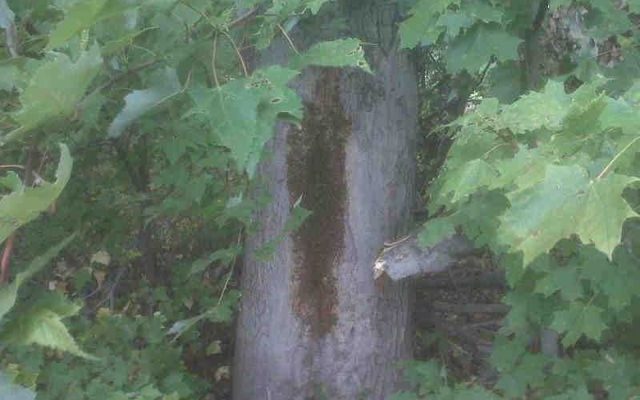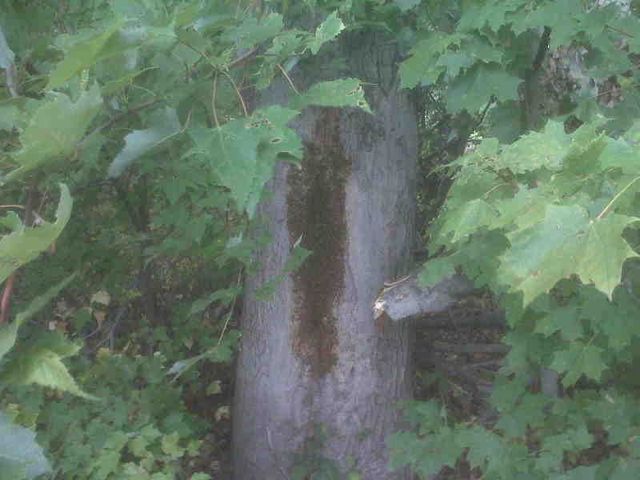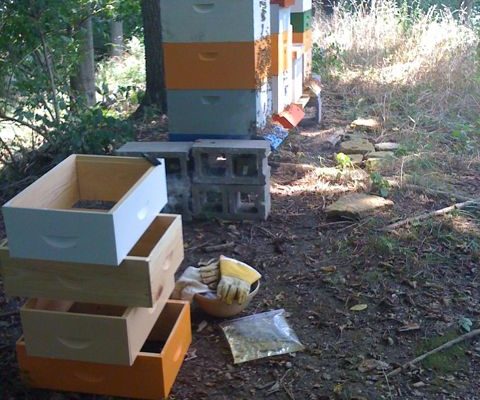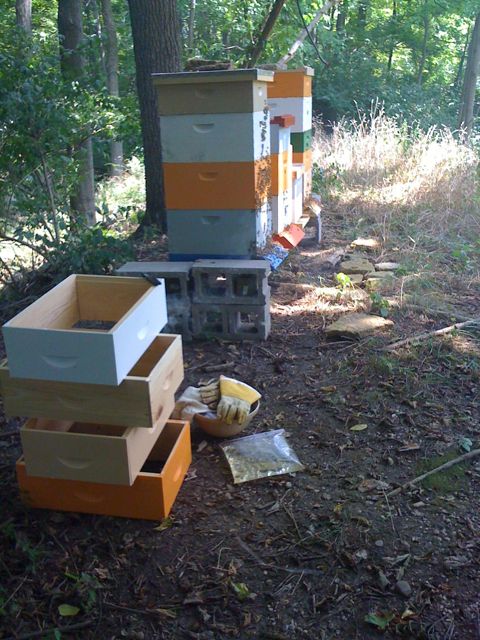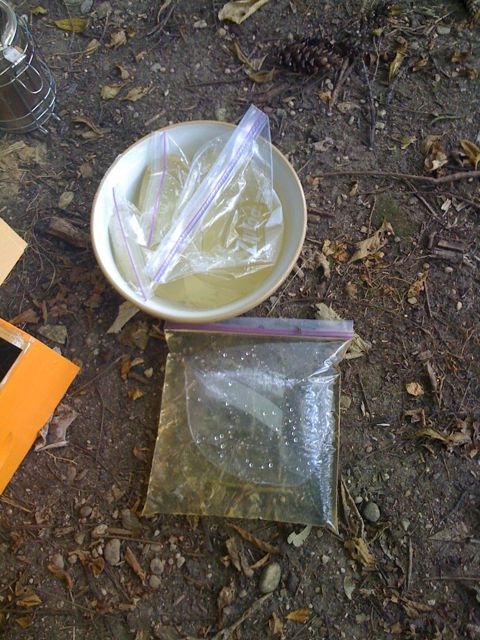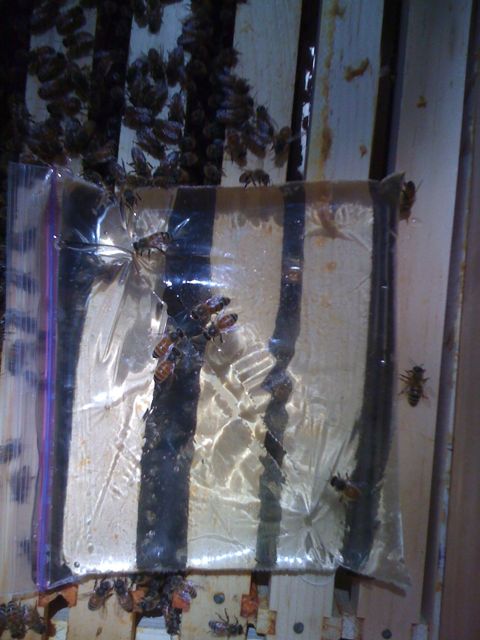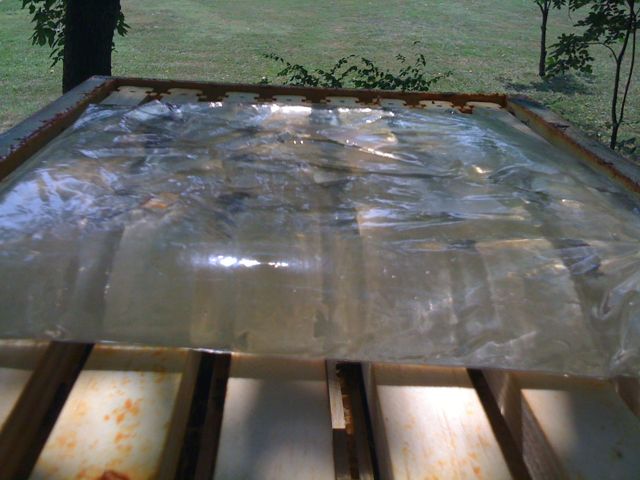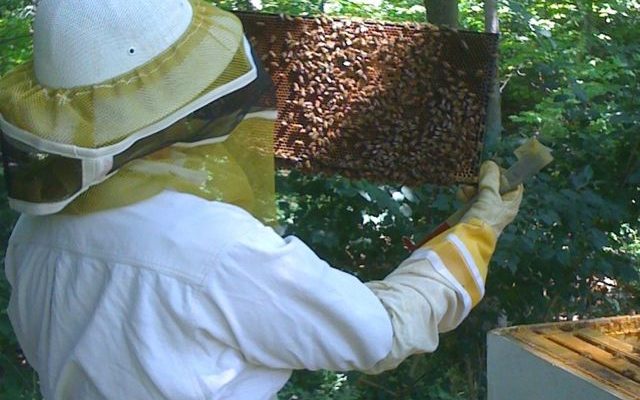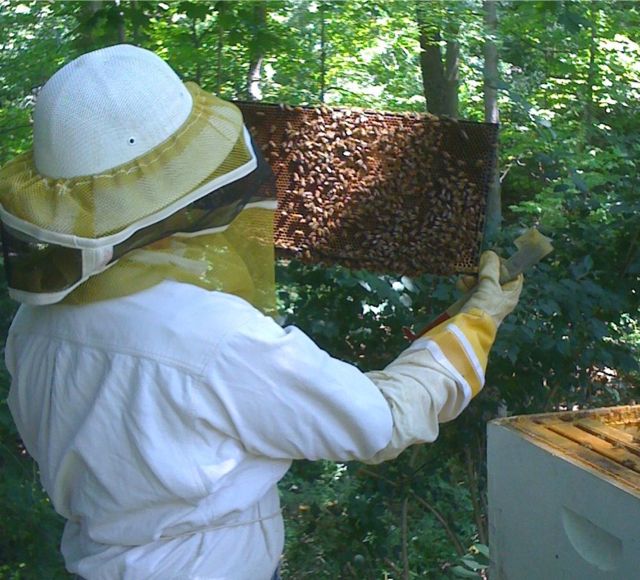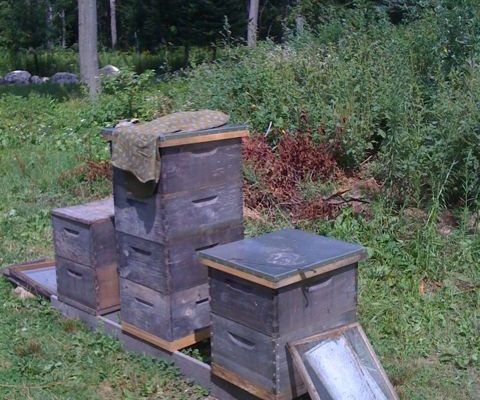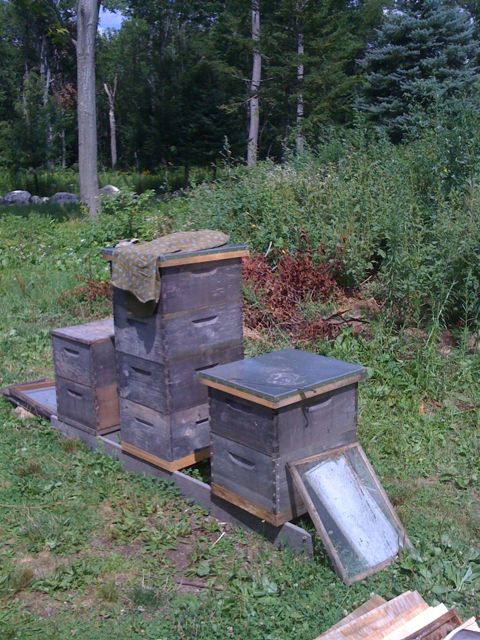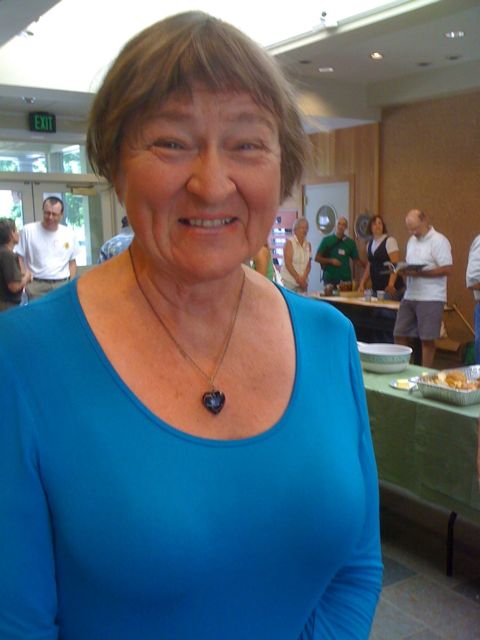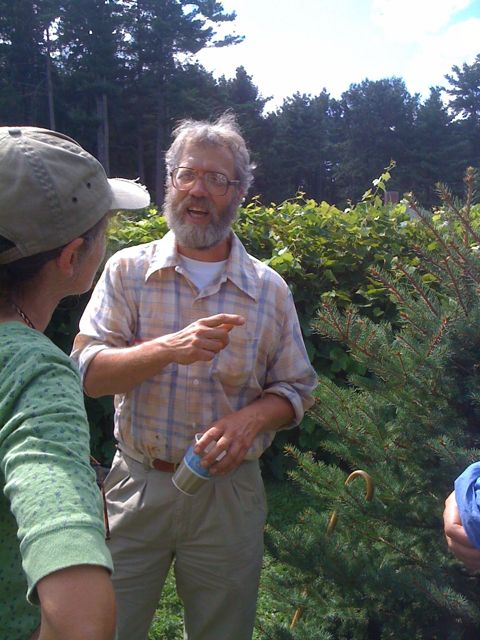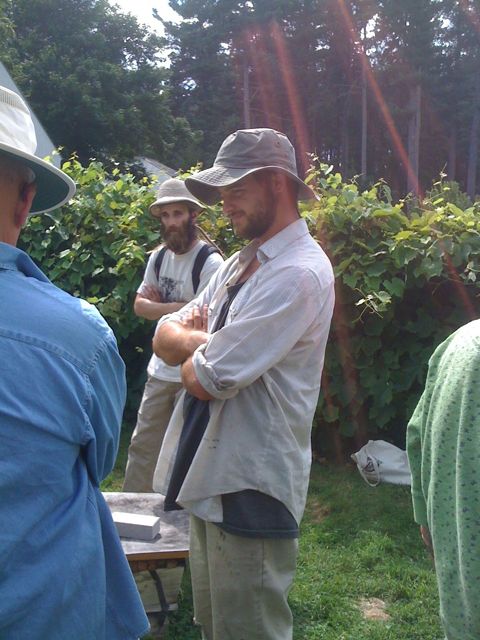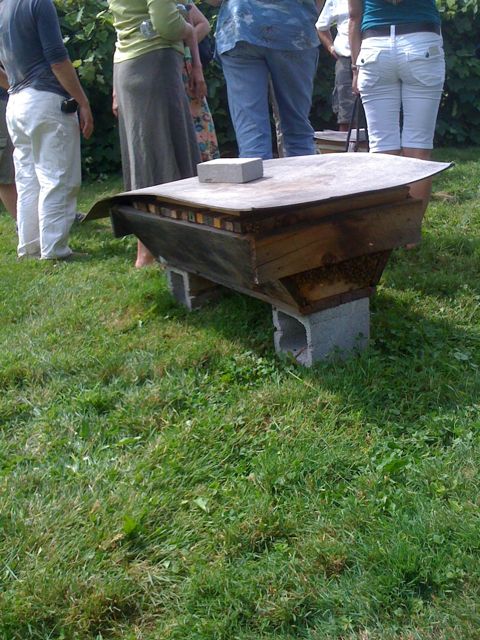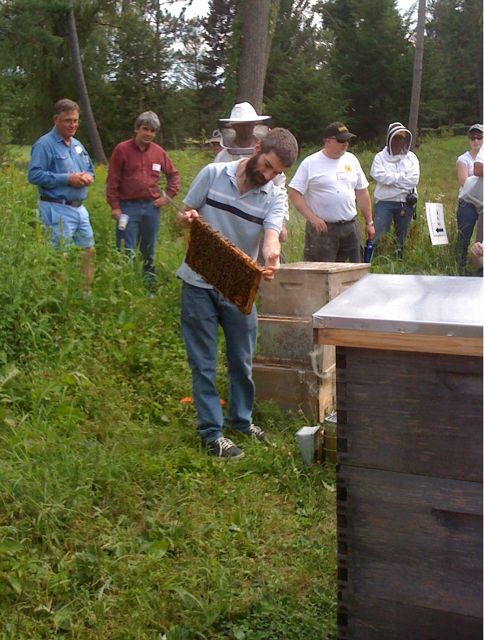Good morning, Reader. Amazing that a week can fly by as this one has.
Today I go to look at the bees in the tree. However, I’ve decided not to attempt removing them…unless I can convince the guy who owns it to cut the tree down. He says it’s pretty much dead anyway, and without access to the comb and queen and eggs and larvae, there’s little reason for me to attempt to collect the bees. Why? Well, all I would have at the end of the process is a single generation of bees.
Without the queen I have no egg layer, so the hive can’t propagate. Even if I couldn’t get to the queen for some reason, I’d like to get my hands on the comb because the comb contains all the eggs and larvae with which the bees could raise a new queen. But without access to the eggs or larvae (which is all in the comb, which is all inaccessible in the tree), the other bees have nothing with which to make a new queen, and they will all die out in a couple of months.
I could use the single generation of bees if I needed workers to beef up one of my already-existing weak colonies (and I don’t have any weak colonies…small, yes…weak, no), but in this current dearth there’s nothing for worker bees to do…no foraging, no comb building, etc. They’re all washboarding on the hives right now, and they only washboard when there’s no work to do. Additional workers would simply suck up the nectar and the honey from the hive, and I need that for the bees already living there.
So, if my goal is to build up a weak colony of my own, then collecting the bees from the tree works fine. But I don’t want to do that at this time of year.
All this thinking is good exercise.
Here’s a picture from The ABC and XYZ of Bee Culture. If I wanted to collect only the bees and not the queen or the comb or the eggs or the larvae from either a tree or a structure, this is how I’d rig it up.

